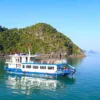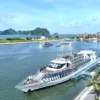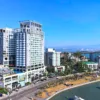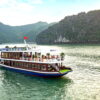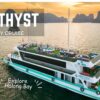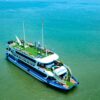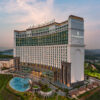Day Trip in Halong: Who Should Not Eat Sea Horseshoe Crab?
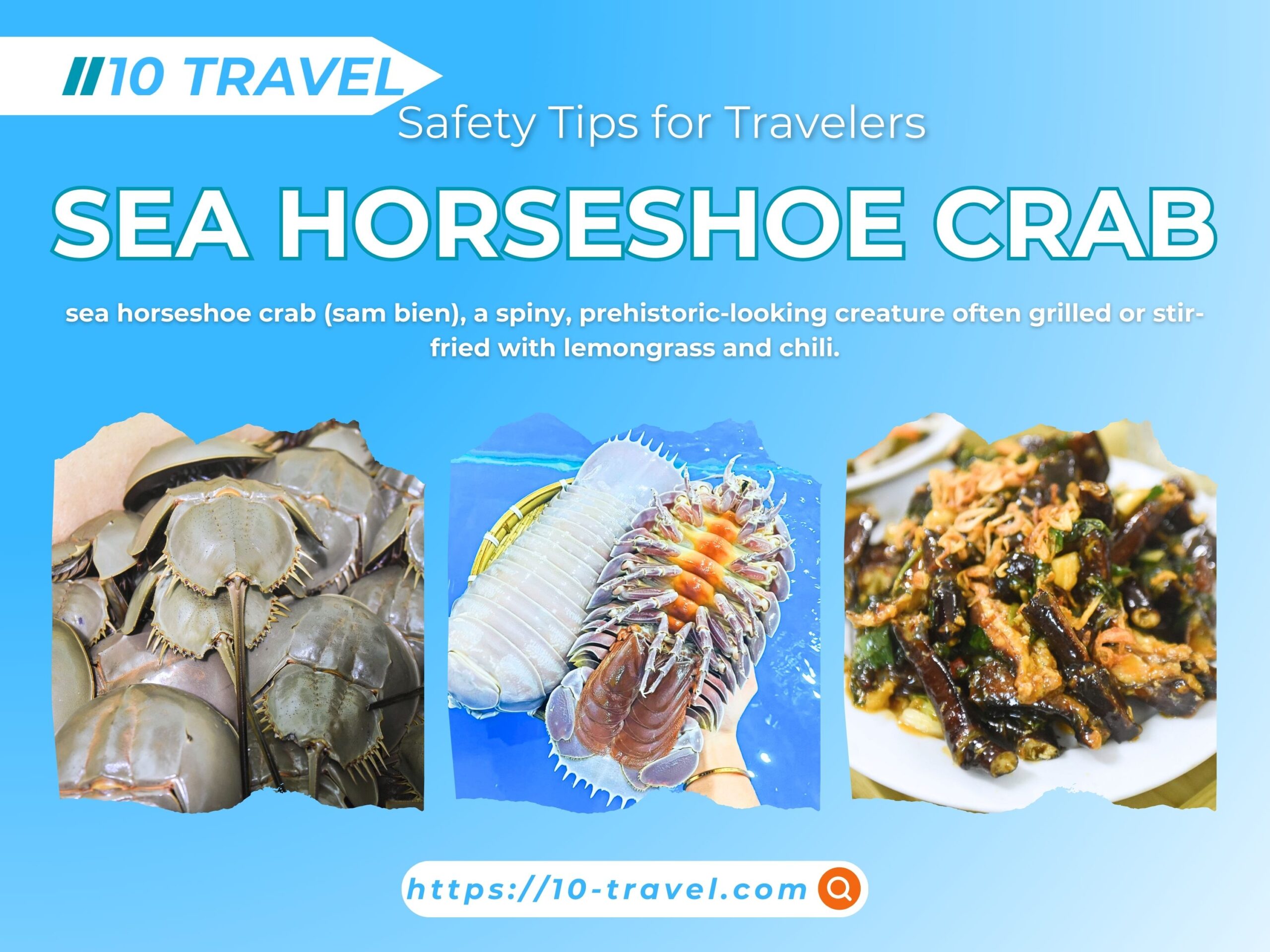
A Halong day trip is one of the most rewarding travel experiences in Vietnam. From cruising among limestone karsts to exploring hidden caves, every moment feels unforgettable. But beyond the breathtaking scenery, Halong Bay is also a food lover’s paradise. Seafood is king here and adventurous travelers often seek out unusual delicacies.
One such dish is the sea horseshoe crab (sam bien), a spiny, prehistoric-looking creature often grilled or stir-fried with lemongrass and chili. While it is a prized local specialty, not everyone should try it. In fact, eating sea horseshoe crab carries some risks if you’re not careful. So, who should avoid it — and what are safer alternatives? Let’s dive in.
Do You Know What Is Halong’s Quiet Twin and Should You Try It on a Day Trip?
Sea Horseshoe Crab – A Unique Halong Delicacy
What is sea horseshoe crab and why it’s special in Halong
The sea horseshoe crab is a marine arthropod with a hard shell and long tail. Despite its intimidating appearance, locals in Halong have turned it into a celebrated dish. Its meat is chewy, slightly sweet and often compared to crab or lobster but with a distinct briny flavor. It’s not an everyday food — it’s seasonal, relatively rare and usually reserved for special meals. Travelers often come across it at night markets or seafood restaurants around Bai Chay.
Common ways locals prepare and serve it
-
Grilled over charcoal with chili salt.
-
Stir-fried with lemongrass and chili, a bold, spicy dish.
-
Cooked with vermicelli or porridge, making it softer and easier to eat.
Locals say the best part is the roe, which is rich and creamy, though also the riskiest to eat.
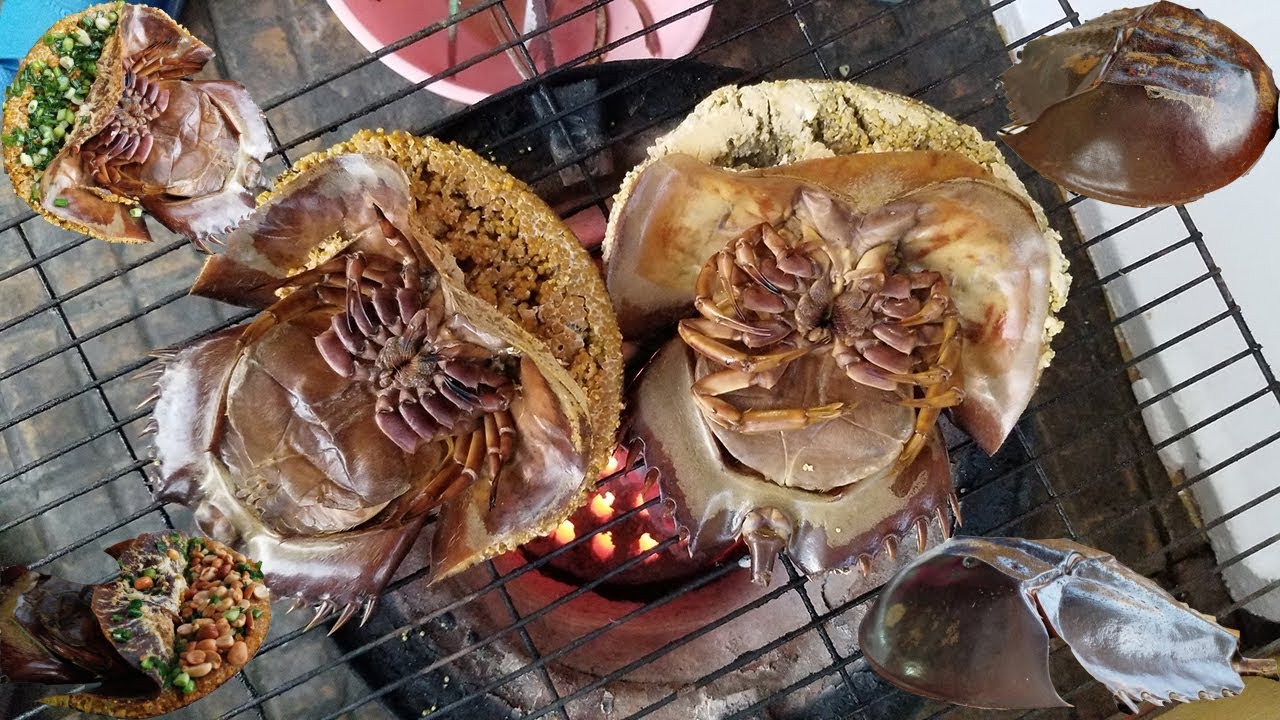
Where tourists usually find it
On a Halong day trip, travelers may encounter sea horseshoe crab at:
-
Seaside food stalls in Hon Gai or Bai Chay.
-
Night markets, where fresh seafood is cooked to order.
-
Cruise dinners, though fewer operators serve it due to preparation risks.
Who Should Avoid Eating Sea Horseshoe Crab on a Halong Day Trip
While tempting, sea horseshoe crab is not suitable for everyone. Certain groups of travelers should avoid it completely.
Travelers with seafood allergies
Seafood allergies are among the most common food sensitivities worldwide. Even mild allergies can flare up when trying unfamiliar dishes. Sea horseshoe crab, being both exotic and rich, can trigger reactions from hives to more severe symptoms.
Pregnant women and elderly visitors
Pregnant women are advised to avoid unusual or exotic seafood due to bacteria, toxins and mercury risks. The same goes for elderly visitors, who may have weaker immune systems or slower digestion. Eating something heavy or risky during a packed Halong Bay tour can spoil the experience.
People with weak digestion or stomach sensitivity
Sea horseshoe crab is harder to digest than fish or prawns. Combined with the spices used in local cooking, it can upset sensitive stomachs. If you’re prone to food poisoning or indigestion while traveling, it’s better to skip this dish.
Tourists unfamiliar with local preparation methods
Unlike shrimp or fish, horseshoe crab must be prepared correctly. Certain parts are toxic if not cleaned properly. Local chefs know how to do this safely, but if you buy from a random street stall, the risk is higher. Tourists unfamiliar with these nuances may not recognize safe preparation.
You pay Superior double room price but you get Suite executive room.
Food Safety Concerns Around Sea Horseshoe Crab
Why improper preparation can be dangerous
Not all horseshoe crab species are edible. Some contain toxins, especially in their eggs. Eating improperly cleaned crab can lead to poisoning, dizziness, or nausea.
Risks of buying from unverified street vendors
Night markets in Halong are lively and inviting, but not all stalls meet proper food safety standards. With seafood, freshness is critical and horseshoe crab spoils quickly. Always be cautious when tempted by cheap prices.
How to spot safe, freshly prepared dishes
-
Choose stalls with high customer turnover.
-
Look for crabs that are grilled or cooked to order.
-
Avoid dishes that have been pre-cooked and left out.
-
Ask your guide or tour operator for recommendations.
Perfect Deal: Halong Bay Day Cruise Tour with a Preferred Room at Marina Hanoi Hotel
Safer Alternatives to Try Instead
If you decide that horseshoe crab isn’t worth the risk, don’t worry. Halong Bay has countless other seafood treasures.
Classic Halong squid patties (cha muc)
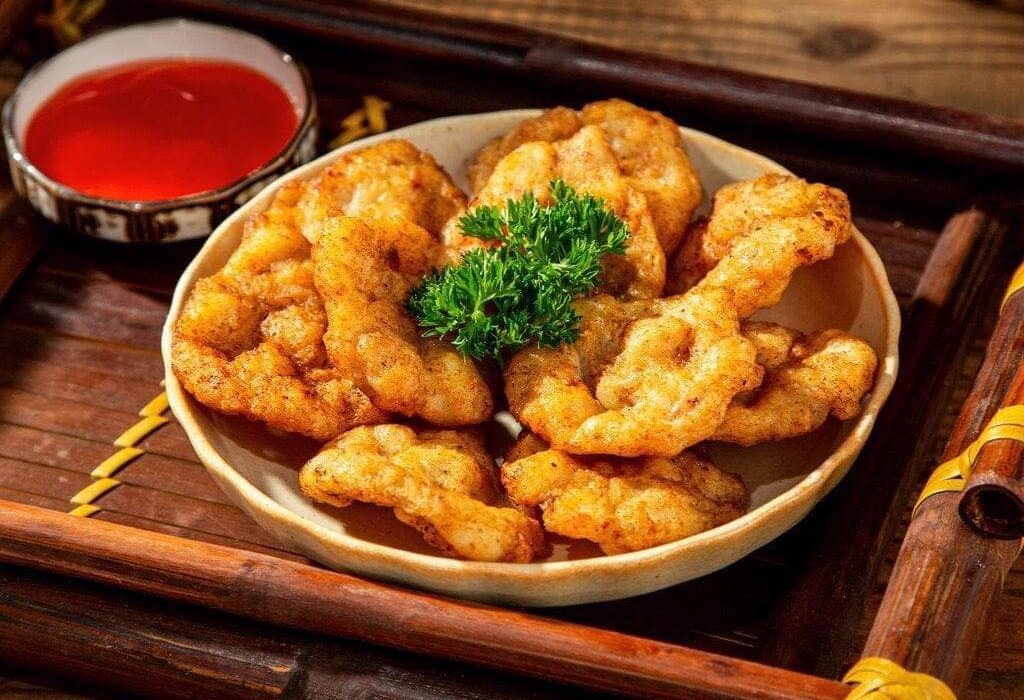
The signature dish of Halong, these hand-pounded squid patties are crispy, chewy and beloved by locals and tourists alike. They are widely considered one of the safest and most authentic dishes to try on a Halong day trip.
Grilled oysters, prawns and clams
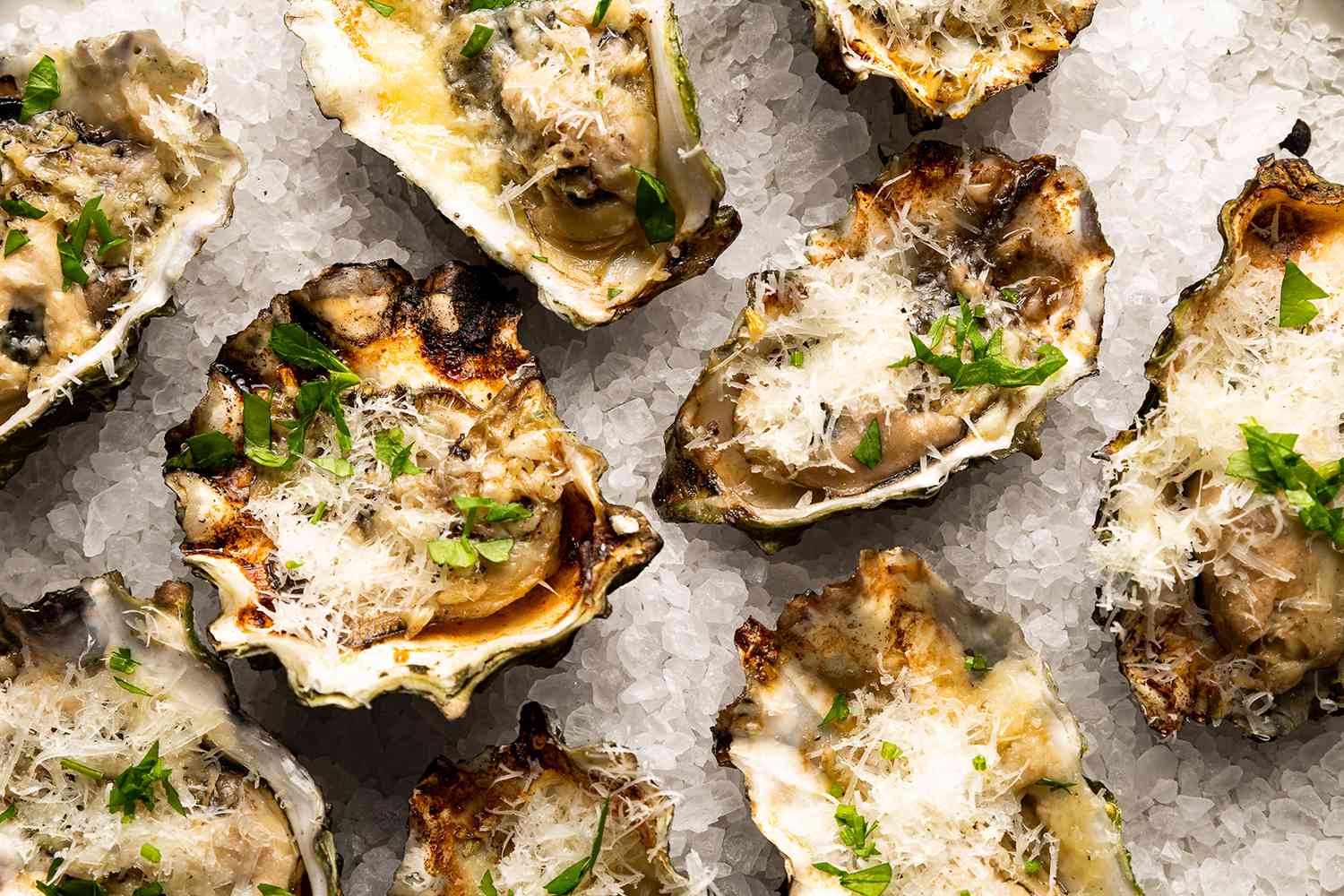
Fresh oysters drizzled with scallion oil, prawns grilled over charcoal and clams steamed with lemongrass are safer choices. They’re easier to digest and commonly served on cruises.
Vegetarian-friendly Halong specialties
For those avoiding seafood altogether, options include:
-
Banh cuon chay (vegetarian steamed rice rolls).
-
Stir-fried morning glory with garlic.
-
Tofu in tomato sauce served with steamed rice.
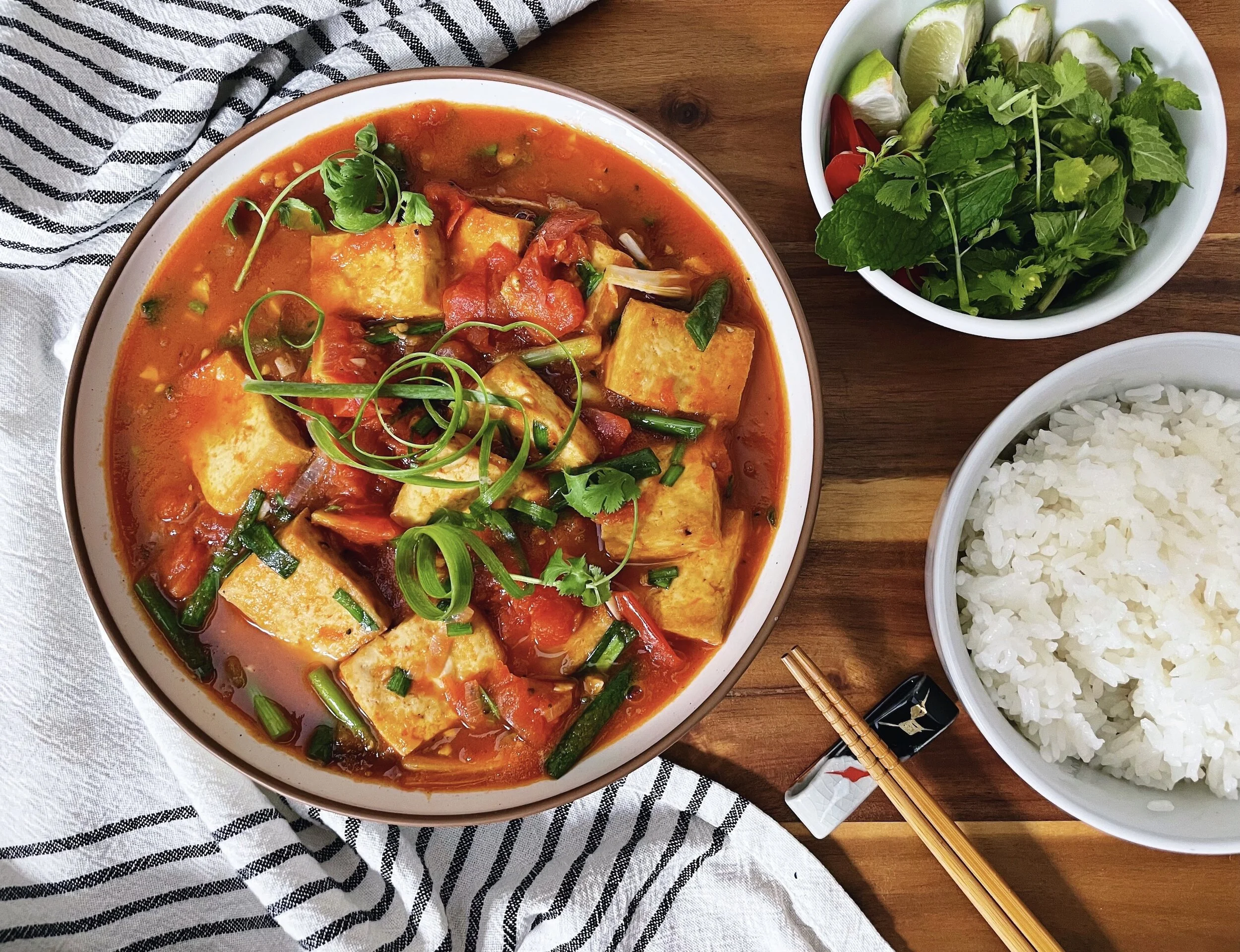
Halong Food Guide: Squid Patties, Sea Horseshoe Crab or Sa Sung — What Should You Try First?
Tips for Enjoying Food Safely on a Halong Day Trip
Choosing reputable restaurants or cruise tours
If you want to taste local seafood without risk, book a Halong Bay day cruise that includes meals. Operators usually prioritize hygiene and use fresh ingredients.
Informing your guide about dietary restrictions
Guides can help steer you away from unsafe options. Whether you’re vegetarian, allergic or simply cautious, let them know in advance.
Balancing sightseeing and food adventures
Remember: food is only part of your day trip. Focus on attractions like:
-
Sung Sot Cave, the largest in Halong Bay.
-
Ti Top Island, known for panoramic views.
-
Cruising among limestone cliffs and floating villages.
By pacing your food exploration, you’ll enjoy both the flavors and the scenery.
